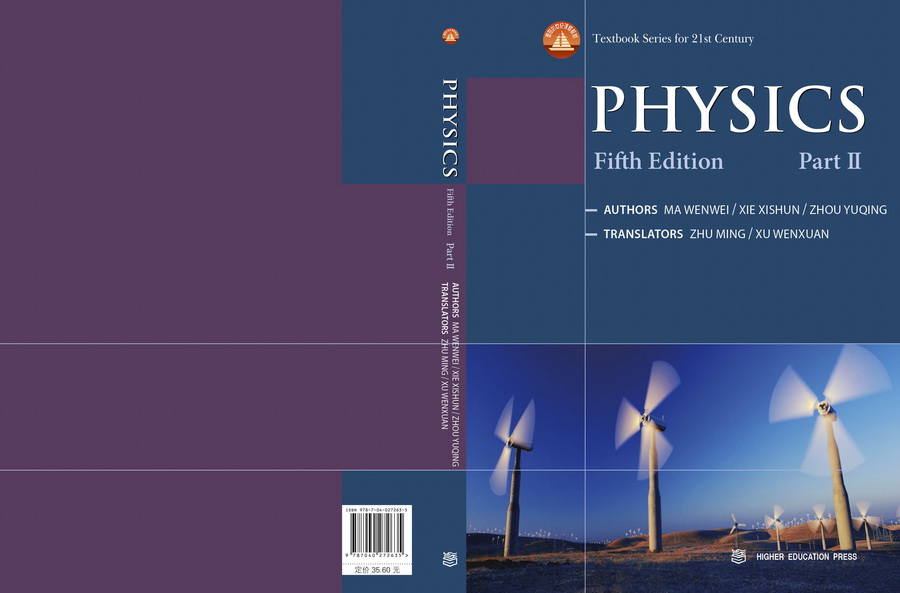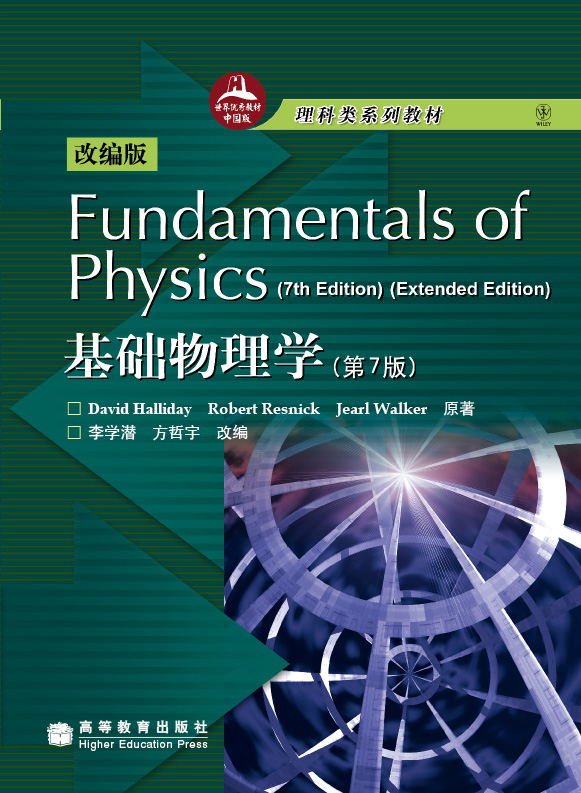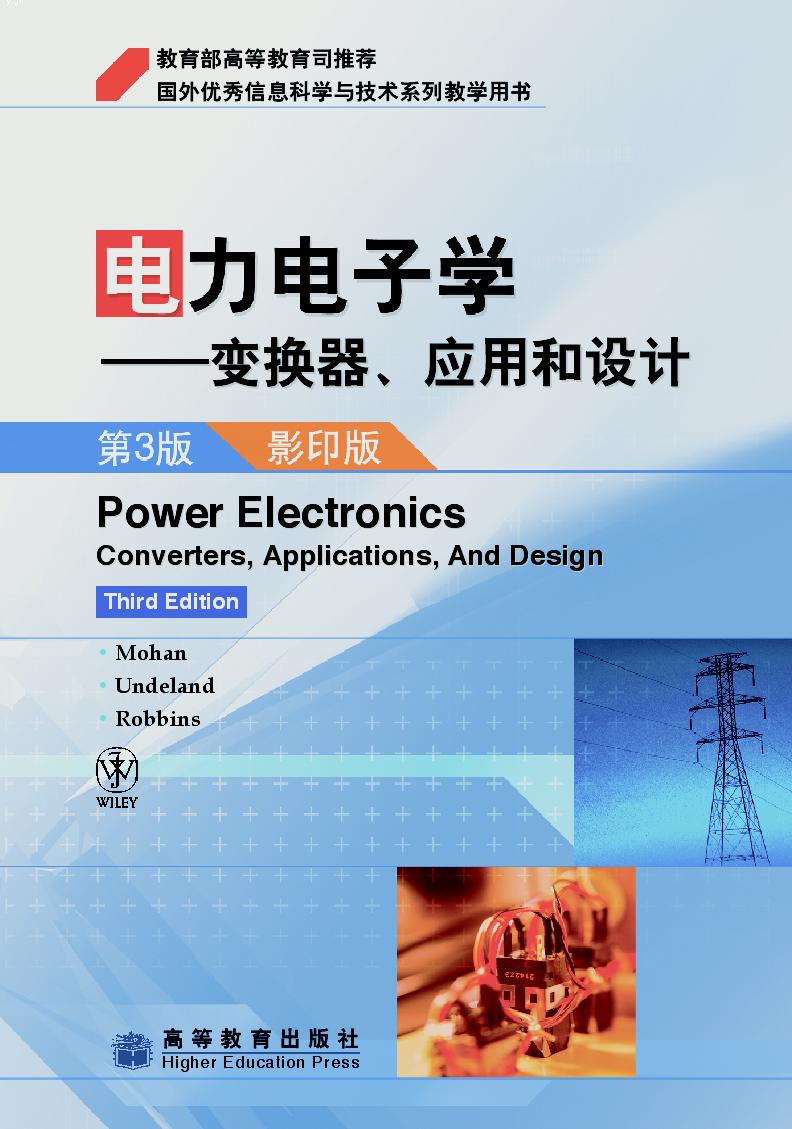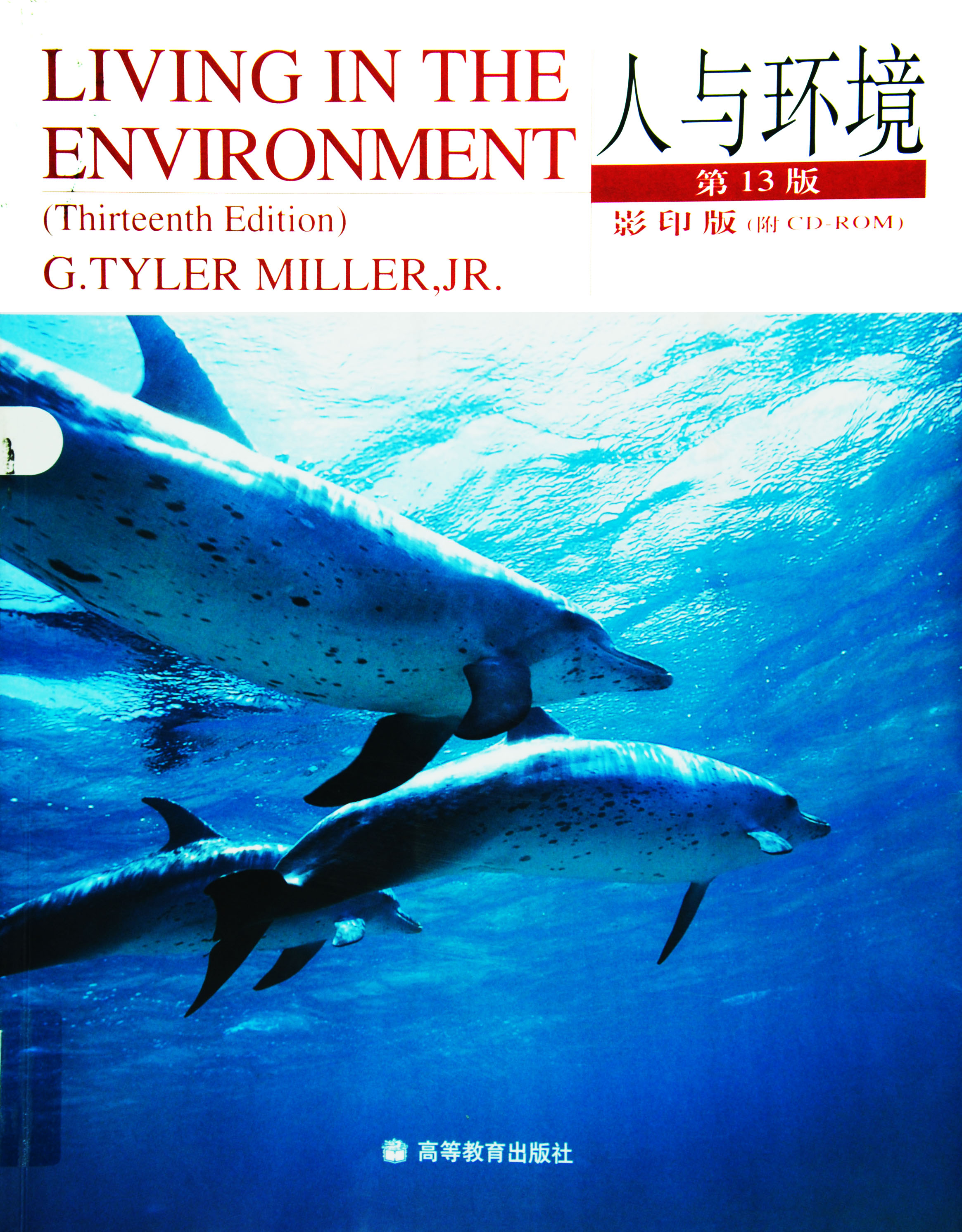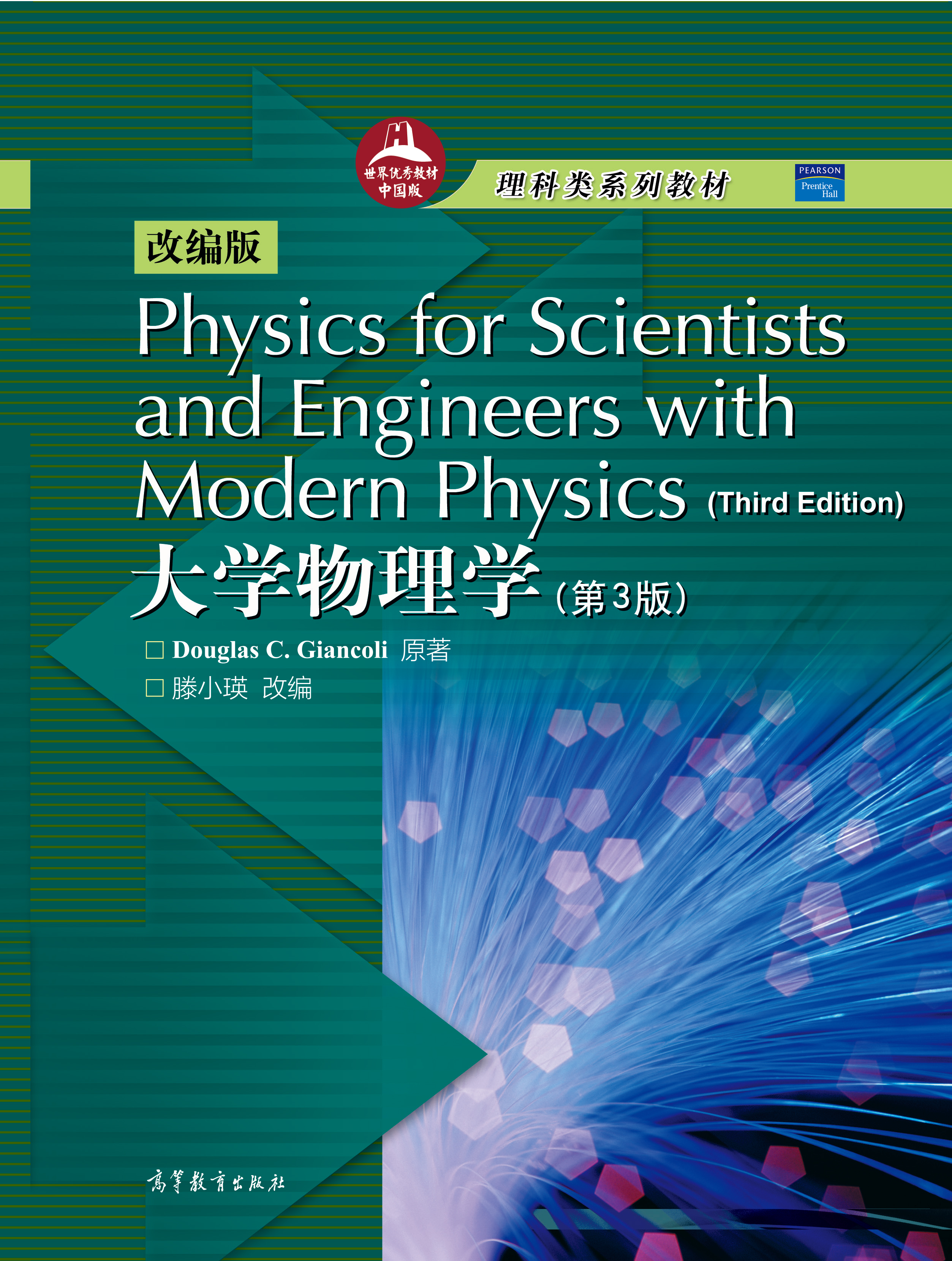物理学(第5版)下册(英文版) / 面向21世纪课程教材
作者: 马文蔚,朱明
出版时间:2009-07-20
出版社:高等教育出版社
“十二五”普通高等教育本科国家级规划教材
- 高等教育出版社
- 9787040272635
- 1版
- 142956
- 48261968-1
- 平装
- 异16开
- 2009-07-20
- 400
- 374
- 理学
- 物理学类
- O4
- 工学
- 本科
On the base of Physic(Fourth Edition),the revision of this book is made consulting The Basic Requirement of Teaching University Physics Course for Non-physical Major in University of Science and Engineering (Discussion Draft)and constituted lastly by sub-committee of physics essential lecture teaching guidance for non-physics specialty,Education at in the book contains all of kernels required in the basic requirement,moreover,a certain amount of extension content is presented as well as for different the revision,this book keeps specialties such as logical system,well-situated profundity and extension,proper capacity,wide flexibility coming from the original vision of the anwhile,it adds more contents in following aspects:modern physics,the annotation with modern viewpoints for classic physics,and the effects to science and technology from the achievements of modern physics.
This book has two Volume Ⅰ,it contains mechanics and d in Volume Ⅱ,it contains oscillation and undulation,optics,theory of molecular dynamics and basic of thermodynamics,theory of relativity,quantum ere are books The Applications of Physical Principle in Engineering and Technology(Third Edition),The Analysis and Solution for Exercises in Physics(Fifth Edition),Guidance for Learning Physics(Fifth Edition)and the multimedia The Electronic Teaching Plan for Physics(Fifth Edition)to form a complete set with this book.
This book can be the teaching material of the higher education for non-physical major in university of sciences and can also be selected as texts by the relevant fields of social sciences and natural sciences and read by social readers at large.
Chapter 9 Oscillation
9-1 Simple Harmonic Motion, Amplitude, Period and Frequency, Phase
mple harmonic motion
plitude
riod and frequency
ase
e solution of constant A and φ
9-2 Rotating Vector
9-3 Single Pendulum and the Physical Pendulum
ngle pendulum
ysical pendulum
9-4 Energy in Simple Harmonic Motion
9-5 Superposition of Simple Harmonic Motions
perposition of two simple harmonic motions with same frequency in the same direction
perposition of two simple harmonic motions with the same frequency in perpendicular direction
*perposition of several simple harmonic motions with the same frequency in the same direction
perposition of two simple harmonic motions with different frequency in the same direction beat
*9-6 Damped Oscillation, Forced Oscillation and Resonance
mped oscillation
rced oscillation
sonance
9-7 Electromagnetic Oscillation
cillation circuit, free electromagnetic oscillation without damping
e equation of the free electromagnetic oscillation without damping
e energy of the free electromagnetic oscillation without damping
*9-8The Brief Introduction of Non-linear System
QUESTIONS
EXERCISES
Chapter 10 Wave Motion
10-1 Several Concepts of Mechanical Wave
e formation of mechanical wave
ansverse wave and the longitudinal wave
velength, wave period and frequency, wave speed
ve line, wave surface, wave front
10-2 Wave Function of Simple Harmonic Wave
ve function of simple harmonic wave
e physical meaning of wave function
10-3 Energy in Wave Motion, Energy Flux Density
e propagation of wave energy
ergy flux and energy flux density
10-4 Huygens Principle, Diffraction and Interference of Waves
ygens principle
e diffraction of waves
e interference of waves
10-5 Standing Waves
rmation of standing waves
uation of standing waves
ase jump
ergy in standing waves
rmal modes of oscillation
10-6 Doppler Effect
server moving with velocity v0 relative to medium while wave source is at rest
ve source moving with velocity vs relative to the medium toward,while observer is at rest
ve source and observer moving simultaneously relative to the medium
10-7 Plane Electromagnetic Waves
neration and propagation of electromagnetic waves
aracteristics of plane electromagnetic waves
ergy in electromagnetic waves
e electromagnetic spectrum
*10-8 Sound Wave, Ultrasonic Wave and Infrasonic Wave
e sound wave
trasonic wave
frasonic wave
QUESTIONS
EXERCISES
Chapter 11 Optics
11-1 Coherent Light
11-2 Young’s Double-slit Interference, Lloyd Mirror
ng’s double-slit interference
*e effect of the slit width to the fringes, space coherence
oyd mirror
11-3 Optical Path, Film Interference
tical path
e lens does not introduce the additional optical path difference
erference in thin film
*ual inclination interference
11-4 Wedge,Newton’s Ring
dge
wton’s ring
11-5 Michelson Interferometer, Time Coherence
chelson interferometer
*me coherence
11-6 The Diffraction of Light
e diffraction phenomenon of light
ygens-Fresnel principle
esnel diffraction and Fraunhofer diffraction
11-7 Single-slit Diffraction
11-8 Hole Diffraction, the Resolution Capability of Optical Instruments
11-9 Diffraction Grating
ating
e formation of grating diffraction fringe
ffraction spectrum
*4.X-ray diffraction
11-10 The Polarization of Light, Malus Law
ture light,Polarized light
laroid sheet,Polarizing and Polarization analysis
lus law
11-11 The Polarization of Reflected Light and Refracted Light
11-12 The Birefringence
e birefringence of ordinary light and extraordinary light
*e explanation of huygens principle to birefringence phenomenon
*3.1/4 wave plate and half-wave plate
*n-made birefringence phenomenon
*11-13 The Liquid Crystal Display
e sort of the liquid crystal
e electro optical effect and display principle of the liquid crystal
e display of liquid crystal
*11-14 Geometrical Optics
e fundamental laws of geometrical optics
e catoptric imaging and the dioptric imaging of light on the plane
toptric imaging and dioptric imaging of light on spherical surface
in lens
e microscope, the telescope and the camera
QUESTIONS
EXERCISES
Chapter 12 Gas Kinetics
12-1 The Equilibrium State, the State Equations of the Ideal Gas,the Zero Law of Thermodynamics
e state parameters of gases
uilibrium state
e equation of the state of the ideal gas
e zeroth law of thermodynamics
12-2 The Microscopic Model of Matter ,the Law of Statistics
e scale of molecules and molecular forces
e disorder and the statistical regularity of the thermal motion of molecules
12-3 The Pressure Formula of the Ideal Gas
e microscopic model of the ideal gas
e pressure formula of the ideal gas
12-4 The Relationship Between the Average Translational Kinetic Energy ,Temperature of the Ideal Gas
12-5 The Theorem of Equipartition of Energy,the Internal Energy of the Ideal Gas
grees of freedom
e theorem of equipartition of energy
e internal energy of the ideal gas
12-6 The Law of Maxwell Speed Distribution of Gas Molecules
e experiment of measuring the speed distribution of gas molecules
e Maxwell speed distribution law of gas molecules
e three statistical speeds
*e problem of gas escaping from the Earth’s atmosphere and questioning with Clausius
*12-7 The Boltzmann Energy Distribution Law, the Isothermal and the Isobaric Formula
e Boltzmann distribution law of energy
e isothermal gas pressure formula in the gravitational field
12-8 The Average Number of Collisions of Molecules and the Mean Free Path
*12-9 The Transport Phenomena of Gases
e viscous phenomenon
at conduction phenomenon
e diffusion phenomenon
e three kinds of transfer coefficients
*12-10The van der Waals Equation of the Real Gases
QUESTIONS
EXERCISES
Chapter 13 Fundamentals of Thermodynamics
13-1 Quasi-static Processes, Work, Heat
asi-static processes
rk
at
13-2 The First Law of Thermodynamics, the Internal Energy
13-3 The Isochoric and Isobaric Processes of the Ideal Gas, the Molar Heat Capacity
e isochoric process and the isochoric molar heat capacity
e isobaric process and the isobaric molar heat capacity
*e heat capacity of solids
e specific heat
13-4 The Isothermal Process and Adiabatic Process of the Ideal Gas, *the Polytropic Process
e isothermal process
e adiabatic process
iabat and isotherm
*e polytropic process
13-5 The Cyclic Process,the Carnot Cycle
e cyclic process
e heat engine and the refrigerator
e Carnot cycle
13-6 The Expressions of the Second Law of Thermodynamics,the Carnot Theorem
e two expressions of the second law of thermodynamics
e reversible and irreversible processes
e Carnot theorem
ality of energy
13-7 Entropy, the Principle of Entropy Increase
tropy
e calculation of the change of entropy
e principle of entropy increase
e principle of entropy increase and the second law of thermodynamics
13-8 The Statistical Significance of the Second Law of Thermodynamics
e Boltzmann formula———entropy and the thermodynamic probability
e degree of disorder and the thermodynamic probability
*e phenomenon of self-organization
*13-9 The Brief Introduction of Comentropy
e relationship between information and entropy
e quantities of information
entropy
QUESTIONS
EXERCISES
Chapter 14 Theory of Relativity
14-1 Galilean Transformation, Newton’s Notions of the Absolute Space-time
lilean transformation, the relativity principle of classical mechanics
e notions of absolute space-time of classical mechanics
14-2 Michelson-Morley Experiment
14-3 The Basic Principle of Special Relativity,Lorentz Transformation
e basic principle of special relativity
rentz transformation
rentz velocity transformation
14-4 The Notions of Space-time of Special Relativity
lativity of simultaneity
ngth contraction
me dilation
*perimental evidences for time dilation and length contraction
*14-5 Doppler Effect of Light
14-6 Relativistic Momentum and Relativistic Energy
lation between momentum and velocity
e basic equations of special relativity mechanics
lation between mass and energy
plication of mass-energy formula in nuclear fission and nuclear fusion
lation between momentum and energy
*14-7 Plasma and Controlled Nuclear Fusion
asma and its basic property
perties of plasma in magnetic field
spect of controlled nuclear fusion
*14-8 Introduction to General Relativity
e equivalence principle in general relativity
veral examples of spatiotemporal characteristics in general relativity
QUESTIONS
EXERCISES
Chapter 15 Quantum Physics
15-1 Blackbody Radiation, Planck’s Energy Quantum Assumption
ackbody,blackbody radiation
e Stefan-Boltzmann law,Wien displacement law
e Rayleigh-Jeans formula of the blackbody radiation,the difficulty of classical physics
anck’s hypothesis, Planck’s blackbody radiation formula
15-2 Photoelectric Effect, Wave-particle Duality of Light
e law of experiments of photoelectric effect
oton, Einstein equation
plications of photoelectric effects in modern technology
e wave-particle duality of light
15-3 Compton Effect
15-4 Bohr’s Theory for the Hydrogen Atom
view of the latter-day viewpoints to hydrogen atom
hr’s theory of the hydrogen atom and its difficulties
*15-5 Franck-Hertz Experiments
15-6 De Broglie Wave,Wave-particle Duality of Material Particle
Broglie hypothesis
e experimental proof of de broglie wave
amples of applications
e statistical interpretation of de broglie wave
15-7 The Uncertainty Relationship
15-8 Introduction to Quantum Mechanics
ve function,the probability density
hrödinger equation
e dimensional potential well
*e correspondence principle
e dimensional potential barrier, the tunneling effect
15-9 Introduction to the Quantum Theory of the Hydrogen Atom
hrödinger equation of the hydrogen atom
ree quantum numbers
e ground state radial wave function and the electronic probability distribution of the hydrogen atom
15-10 The Electronic Distribution of the Electrons in Multi-Electron Atoms
e electron spin, the spin magnetic quantum number
e distribution of electrons in multi-electron atoms
*15-11 Laser
ontaneous radiation, stimulated radiation
e principle of laser
ser generator
aracteristics and applications of laser
*15-12 Semi-Conductor
e energy band of solids
rinsic semi-conductors and impurity semi-conductors
e pn junction
e light induced volt effect
*15-13 Superconductivity
e conversion temperature of a superconductor
jor characteristics of superconductors
e BCS theory of superconductivity
ture applications of superconductivity
*15-14 Scanning Tunnelling Microscope
ief introduction of STM principle
M operation mode
plications of STM
velopments of STM
*15-15 Introduction to Nano material
no effect
king nano materials
3.A new nano material-carbon nanotube
plication
QUESTIONS
EXERCISES
Answers for Exercises in Part II
Photo Caption


